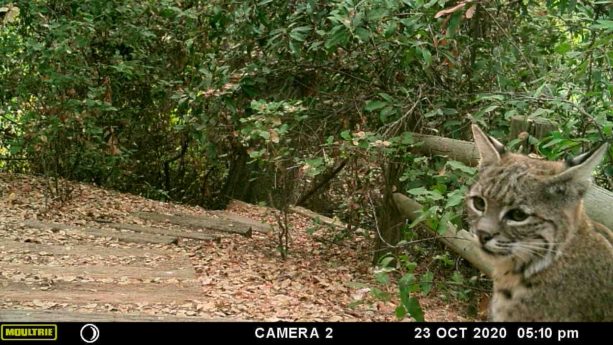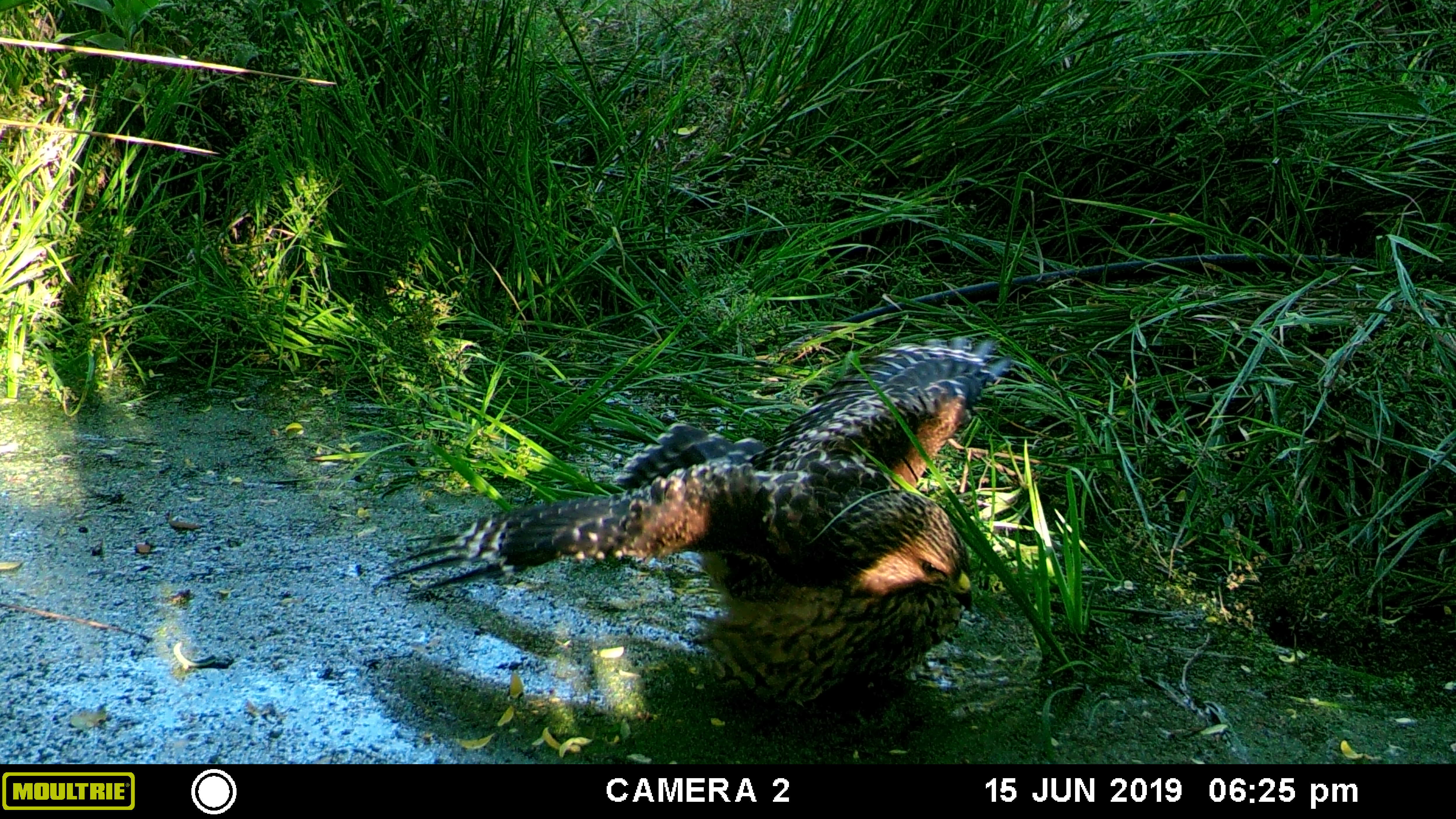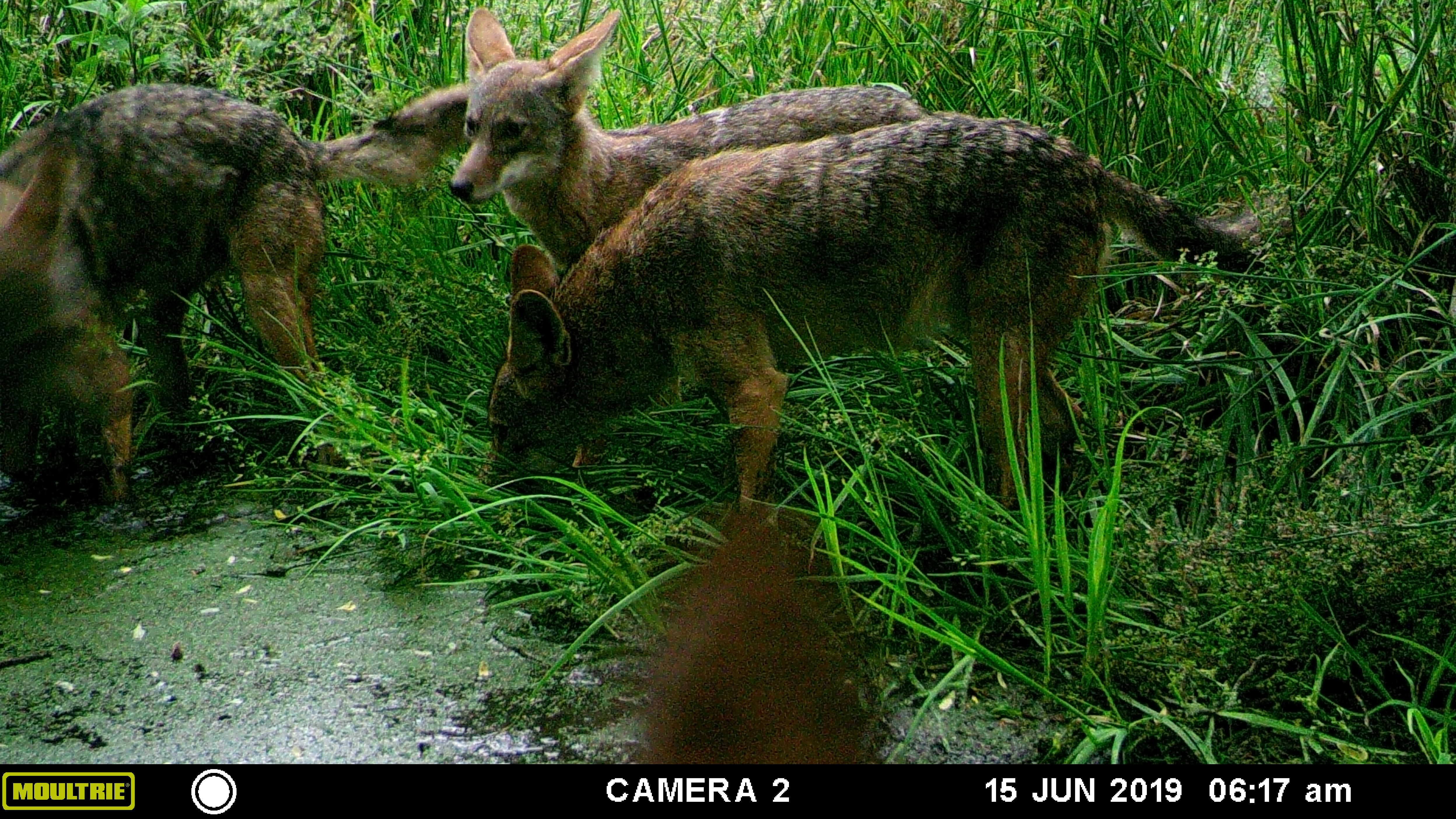-
Mange, Rodenticide and a Bobcat named Daisy
Bobcats are beautiful, shy animals larger than a domestic cat and much smaller than a cougar. Their main food is rabbit, mice, rats and squirrels; given the opportunity they will eat pets and hens if people are careless and unkind enough to allow their pets and hens roam. One bobcat can eat hundreds of rodents a week. They are not aggressive to humans and would rather not encounter anyone, including other bobcats unless it is mating season.
Our property is 1.6 acres, with surrounding lots of similar size and only a couple of miles from town. There is a busy commuter road close by. It is not prime wildlife property. At the bottom of our property there is a seasonal stream where we have encouraged natives to thrive, including an old Coast Live Oak (Quercus agrifolia).
A couple of years ago while watching the short videos from our wildlife camera set up on the stairs leading past the oak and down to the streambed, we cried out in delight when we saw a beautiful bobcat. We named her Petunia. (Time and date signatures on the camera are not accurate, as they reset when batteries go low).
That bobcat gave birth to a little male who delighted us with his kittenish tricks, including sabotaging his mother who puts him in his place. Our palm trunk stairs make great scratching mats. Cats will be cats!
The male, Jonquil, quickly grew up and late last year during bobcat mating season we were delighted to see a young female bobcat. We named her Daisy. Love was in the air. Daisy showed signs of being pregnant in early spring.
We were ecstatic that we were helping to offer habitat to allow these beautiful creatures… who were also helping control the rodents,.. the safety to reproduce. San Diego is one of the most ecologically diverse places in the world. Due to human usage it has been called an epicenter of extinction. Therefore any preserved viable habitat needs to be cherished. Between the years 1970 and 2010 the world lost 52% of its wildlife population across the board, according to a study by the World Wildlife Fund. That figure is now up to 60%. Look at a flock of birds and double it in your mind: that is what should be here. Look at the lizards, the frogs, the seals, the fish, the snakes, the deer…. there should be at least twice as many. The wildlife is disappearing at an alarming rate, and having bobcats reproduce on our property was a miracle.
Then we saw a sign of mange on Daisy and our hope disappeared.
We knew it was all over. Mange is a disfiguring, painful and deadly condition caused by burrowing mites that get under the skin and reproduce. There are several kinds of mites affecting different animals. My mother’s dog had mange and to control it took many long soaks in a miticide-based bath and strong antibiotics. Mange causes the skin to lose hair and crust over in painful and itchy lumps. The animals become lethargic and cannot consume enough calories to be healthy. Infection can set into the wounds. Hearing and eyesight will be compromised as mange surrounds the face. Eventually the animals starve as they are in agony from the pain and itch, and their organs begin to shut down. Its a long and painful death. We knew we had no way of trapping Daisy and bringing her to the Humane Society for treatment although we placed a call to them anyway. When we saw Daisy again the crust had advanced and she no longer had her ‘baby bump’. She was lethargic and looked ill.
In June when down in that area of the property I heard thrashing in a bush near me. It was Daisy. She was covered with mange, emaciated and too weak to stand. I was able to wrap her in a towel, get her into a cage, and Miranda and I took her to the nearest Humane Society although we knew it was too late to help her. Euthanasia helped her pass quickly although I don’t think she even knew what was going on anymore. The following video is emotionally hard to watch. It was taken with my phone camera down through the top of the cage just after I’d moved her to transport her to the Humane Society. Understandably I was enraged and distraught.
A healthy immune system helps bobcats and coyotes keep the population of mites under control. What is the main reason bobcats and coyotes get mange here? From eating rodents that died from ingesting rodenticide. Rats, mice, gophers and squirrels who have been poisoned usually die in the open, and for hungry predators including hawks, owls and carrion eaters such as vultures and condors, its an easy meal. The poison continues to work on the predatory animals. Hawks, owls and other birds and smaller animals will die more quickly and directly from the rodenticide, as will their nestlings to whom they feed the poisoned animals. Larger mammals such as bobcats, coyotes, foxes and bear have their immune system compromised, as well as having some internal damage done upon ingestion. Illnesses such as mange then take over giving these marvelous and necessary creatures a long, slow, painful death. Mites will drop off and move to other mammals as well, so an animal sick with mange will more likely spread the infestation, just as a sick human is more likely to spread germs to others.
I have pleaded with customers at hardware stores carting out buckets of poison because the squirrels ate their peaches, or they have mice under their house, but they don’t really see the problem. If they saw the dead hawks and owls in the parks that we who work and hike in parks see, and saw the mangy coyotes and bobcats as we do, then maybe they wouldn’t do it. There are many ways of reducing rodent problems without using poison. Rodenticide should be outlawed, and unfortunately it will only be until bobcats and coyotes become endangered that maybe something will be done about it. Rodenticide will always cause a secondary kill. Period. Please read this excellent article by Miriam Raftery for East County News. The handful of poison that you throw out will kill a fraction of the rodents, but it will kill predators who will eat them, and those predators would kill thousands of rodents over their lifetimes. Please don’t use poison. Please insist that others stop using it as well. Please try to convince hardware stores to stop selling it. Please.
Here is a post about protecting your plants and home without using poison: https://www.vegetariat.com/2022/09/protect-your-plants-without-using-poison/
Update 9/1/22: Sadly, our wildlife camera has picked up photos of Jonquil, the male we saw raised from a baby, with signs of mange around his face.



